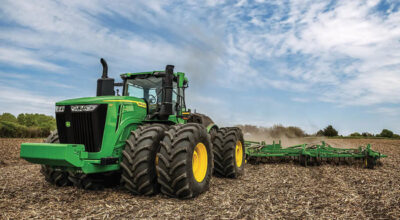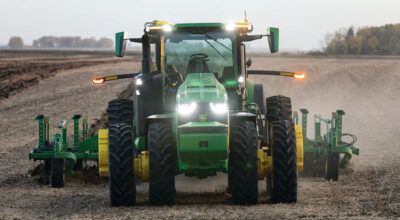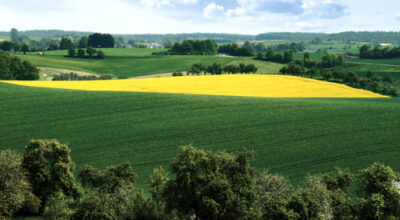Spring is finally in full swing, with farmers having waited months and months for the winter weather to end. These same farmers are now beginning to think about planting and harvesting crops for next season. Despite this enthusiasm, however, many are now facing the result of less than ideal soil conditions which have been impacted further by the use of agricultural equipment. Some of these problems include ruts in the ground, amongst others.
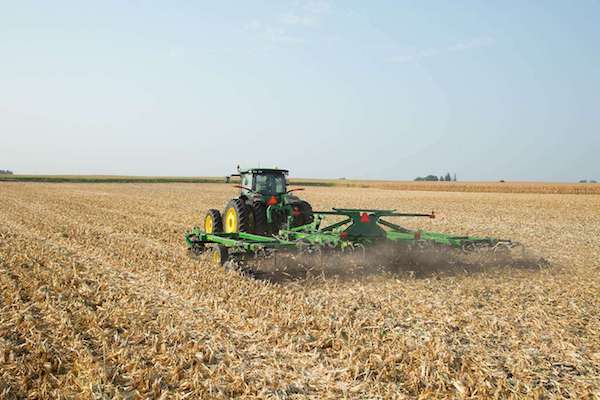
Depending on where you live in the United States, the climate and terrain vary significantly, requiring farmers to think about new strategies for growing under these conditions. Luckily for these modern farmers, there is an extensive selection of agricultural equipment that helps to make this process easier, including the following:
- Preparing your soil properly under this year’s conditions
- Getting farming equipment ready for the spring ahead of time
- Using the right equipment for tillage, planting, and harvesting
- Utilizing the right attachments for the job
Here are some of the ways that you can stay prepared for spring planting and harvesting.
Typical Farm & Soil Conditions for Spring
Winters have a significant impact on farm and soil conditions. Therefore, having a good understanding of how these conditions affect your spring planting will ensure your harvest is in prime condition.
Wet Soil, Ruts, Rills & Gullies
As mentioned above, the wet soil from previous seasons can cause many issues, including the following:
- Ruts: Wet soil can lead to ruts due to soil compaction from combines. Sadly, this is an issue in the spring because this soil compaction can lead to difficulty during planting due to interference with crop rooting and development.
- Rills & Gullies: Due to the increase in storms, there was quite a bit of runoff which led to the creation of rills and gullies, leaving rough terrain for planting during the spring.
When it comes to either ruts or gullies, there are certain pieces of agricultural equipment that can be used to counteract this. Utilizing light disking or field cultivation at an angle can help to fill deep ruts, while seeding a cover crop over some of the gullies can anchor the soil, so that planting is possible, especially on sloping terrains.
Soil Compaction
Soil compaction, as mentioned above, can cause a lot of problems with planting and development, especially since this compaction cannot be broken up with spring tillage. Even if the soil looks a bit dry on the surface, normally it will still be too wet underneath, impacting the effectiveness of tillage equipment in reducing compaction. That being said, if farmers attempt to till extremely wet soil, compaction can be made even worse. Because of this, it is inherent to delay deep tillage until after the harvesting period.
Even post-harvest, one should wait as long as possible so that the ground has dried as deep as possible. That being said, deep tillage should still not be performed. Light, shallow tillage will help to fill in some of the gullies and smooth over some of the ruts.
Soil Temperature
Temperatures have continued to vary significantly across the United States, with a warm beginning to Spring and a cold end of March/beginning of April. Unfortunately, this can lead to uneven growing and emergence of crops. In terms of soil temperatures, experts believe that air temperatures will increase this spring alongside cooler-than-normal winds. This may ultimately slow any increases in soil temperature and potentially cause a delay to the beginning of some producer’s planting seasons.
In addition to air temperature increases and cool winds, experts are also predicting above-normal rates of precipitation. This, in combination with said cool winds, can also slow down any soil warming.
The reason for this delay is that in some states, especially up north, the ground can stay frozen for quite a long time – if the soil is still frozen, planting can be difficult and in some cases, not possible. It is important that the soil is not frozen or too wet, or else plant growth and development can be hindered.
Flooding
Flooding can cause many different problems throughout the calendar year. This includes negative impacts on soil, which then leads to issues for producers across the country.
Below we’ve identified the top consequences of flooding that you should be sure to look out for this spring:
- Crop Delay: Planting in these areas and beyond might be delayed, or avoided entirely.
- Economic Impacts: If planting and harvesting are delayed or not completed, this can have significant economic impacts on farmers and their bottom line during the calendar year.
- Environmental Consequences: Abandoned fields that are left barren for the year can cause significant, long-term damage to the soil.
- Biological Health: The biological health of the soil may be compromised as a result of flooding, which could then lead to chemical and physical changes to the soil.
When Do I Begin Planting in the Spring?
When spring comes around – no matter where you are located – there are a few signs to look out for when planning for spring planting. Let’s take a look at some of them:
Seasonal Shifts
Frost is a very important element to look into when planting crops. There are many different resources that farmers can use to determine the average date of the last frost. Taking this into consideration, farmers will want to plant crops after the frost is fully gone – planting before the winter frost is fully gone can harm plants and even kill them.
Weather
Weather has many different moving parts, meaning there are a lot of things to consider. Some of the most important weather changes to consider are heavy rains, warm temperatures, amount of sun, and humidity levels.
Heavy rain can lead to flooding, soil compaction and problems with planting, while cold temperatures can also cause problems. If you, as a farmer, are aware that any of these weather changes are thought to occur soon, you may want to hold off on planting until everything has cleared up.
Soil Conditions
It’s important to scrutinize the state of your soil because if it’s moist from rain or melted snow, your seeds may not grow well. One way to know when your soil is ready to be worked is by picking up a fistful of dirt and molding it into a ball in your hand; if it breaks with the push of a finger, it’s dry enough to begin planting.
Typical Timing
Crops and plants typically have their own planting and development times. They will likely grow better if they are planted during a season in which they are known to thrive. Farmers should get to know the optimal times for planting and growth.
Soil & Field Preparations
Once soil and fields are prepped, you can then begin planting. In the past, fields have had trouble with sufficient soil. Therefore, before planting your crops, be sure insufficient conditions have cleared so that your farm is in optimal condition for future harvesting.
What Agriculture Equipment is Great for Spring?
There are a few pieces of agricultural equipment that can help to get farms up and running so that farmers can stay on track for the season.
Field Cultivators
Field cultivators are powerful pieces of agricultural equipment that can be extremely helpful in preparing seedbeds, as well as managing weeds, burying crop residue, and mixing soils properly so that the nutrients are evenly distributed. This can help crops to grow evenly as well.
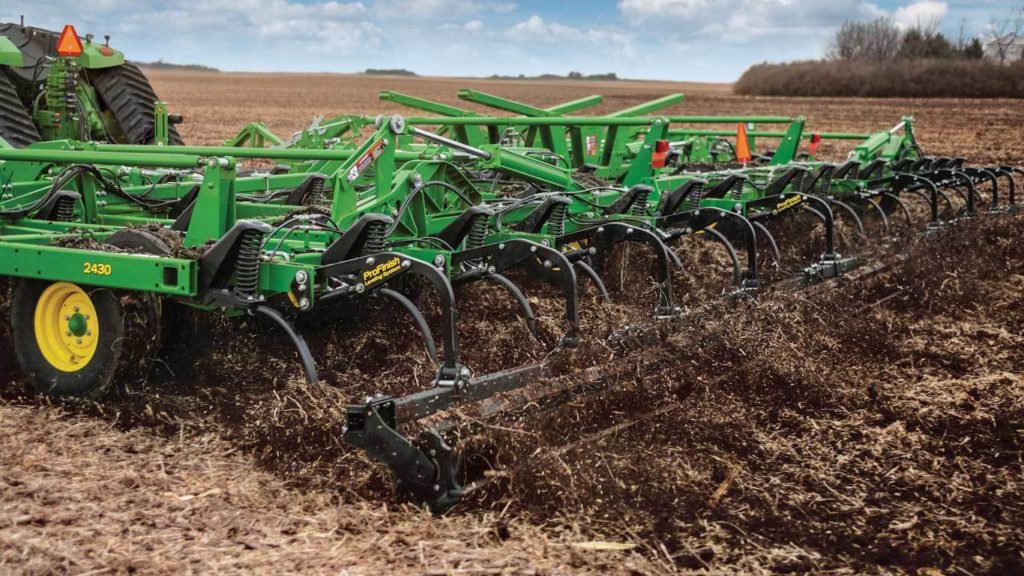
Disk Plows
These pieces of agricultural equipment are extremely important, especially when the ground is hard from winter. Disk plows are great because they work well for lands filled with hard soils, as well as those with tough residue.
While this is typically used for hard, dry soil, it can also be used to reduce wind erosion, amongst other things. Two-way disk plows can also fill in any trenches that are made along the way.
Box Drills
Box drills can be very helpful, whether farmers are drilling row crops, grasses, or small grains. There are many different options of box drills, which differ in use based on the type of crops being planted, as well as many other elements, including:
- Consistency in the depth of the soil
- Levels of residue on the soil
- Spacing necessary in between seeds
Conservation Seeders
Conservation seeders can help farmers take their seeding to the next level. Seeders like this can be useful for essentially every type of seed, as well as every type of ground. This could include any of the following:
- Grass
- Fields
- Turf
- Construction Sites
- Large Yards
How to Prepare Your Field for Spring?
With spring here, it’s important to remember to get your agricultural equipment fully prepared for the season. While many have already gone through the preventative steps, as well as the basic steps for preparing equipment from winter to spring, many forget getting inspections, which can help consecrate this preparedness.
Here are some of the inspections you should check off your maintenance list before spring so that you know your equipment is ready to go.
Tractor Inspections
When it comes to tractors, farmers will want to make sure they get a yearly inspection done. This can help to determine if there are any issues that need to be addressed before the next farming season.
Being proactive and getting this done early, and by a professional, can give you peace of mind that your equipment will be running at peak performance when you need it the most. Any certified technician, using genuine John Deere parts, can ensure that fuel and air filters are not blocked, as well as making sure nozzle capillaries are not worn out.
Sprayer Inspection
Sprayer inspections can help you to save money. One thing to consider is that 60 percent of spraying costs are attributed to chemicals. When John Deere technicians take a look at your sprayer, they can ensure that none of that money is being wasted. This is especially important when the frost begins to subside, as we go from winter to spring.
Spring Field Maintenance with John Deere Agricultural Equipment
Farmers are going to have to work extra hard to get the most out of their fields this spring. That being said, by following these tips for when to plant, as well as how to stay prepared, farmers can avoid significant economic, biological, and long-term consequences. In addition, farmers can take advantage of John Deere’s premium agricultural equipment to harvest crops with efficiency, without compromising quality.
Interested in learning more or have questions about John Deere agricultural equipment? Contact your local John Deere dealer today.
If you enjoyed this post or want to read others, feel free to connect with us on Facebook, Pinterest, Twitter, or Instagram!
